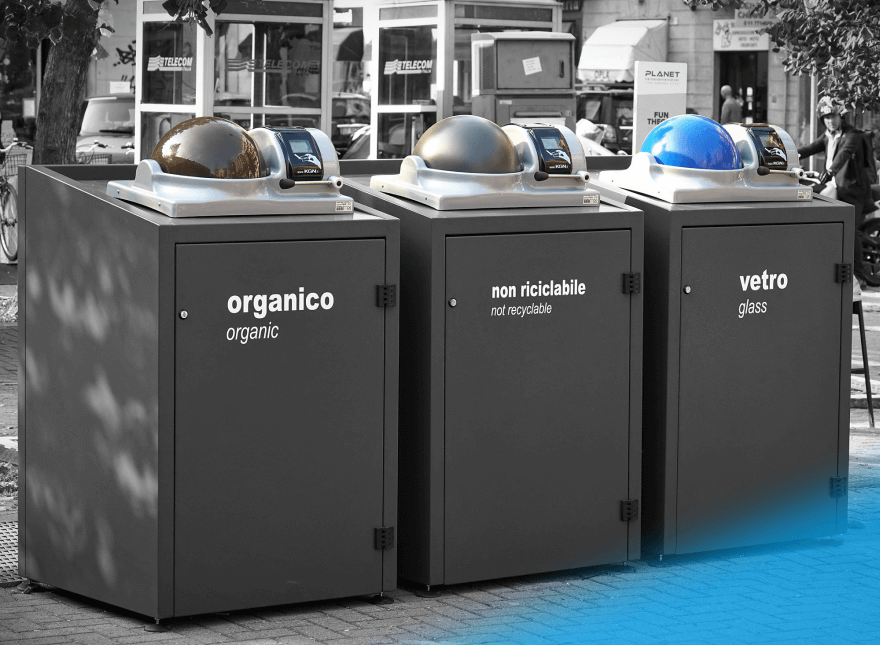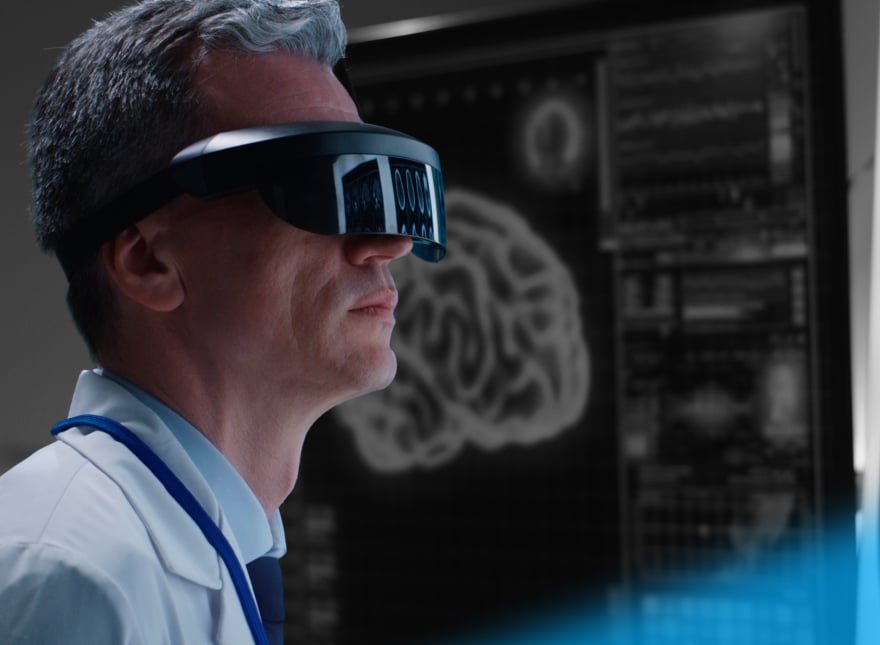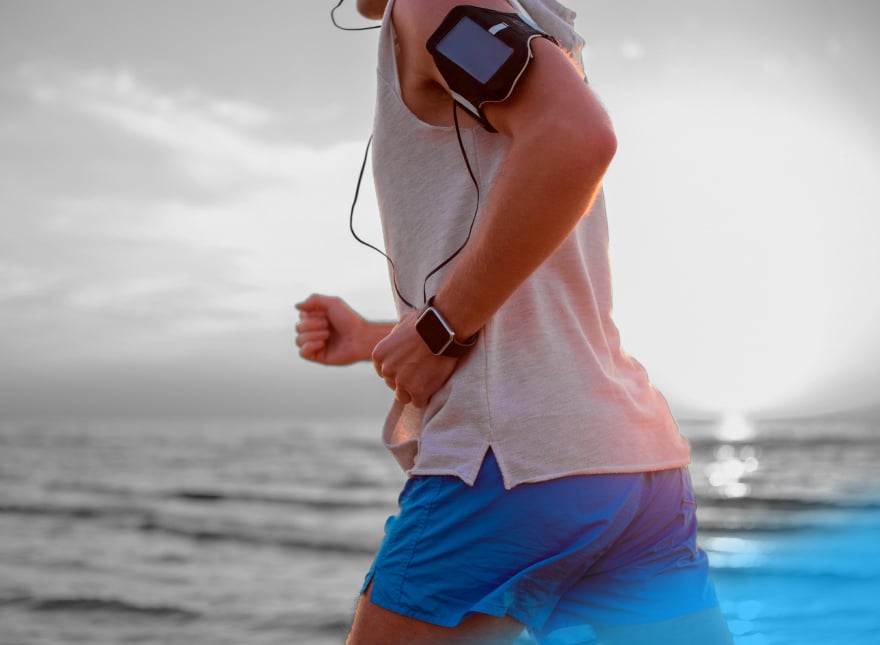Check out our latest blog article: From component to enterprise – modular robotics done right.
How Startups Conquer the Sports Tech Market
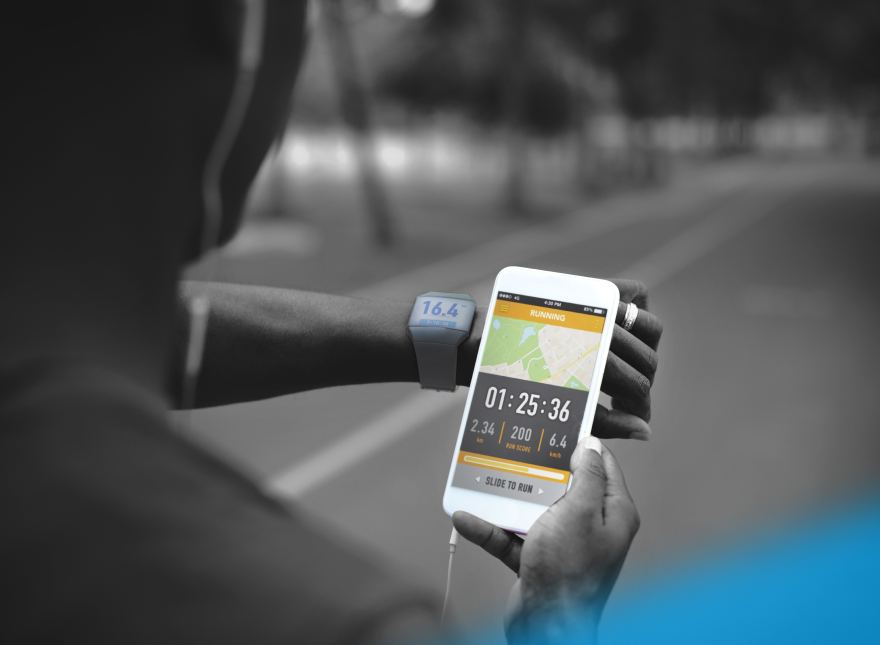
The sports industry today is in need of precise monitoring, smart analytics, and interactive experiences. For everyone, from professionals to amateurs, the pandemic created a desire for effective home workouts. And this has encouraged many startups in the sports industry to build new, innovative solutions. Rising investor interest is also helping startups conquer the market.
This article is an overview of the current state of the sports tech industry. We have included five prospective sports startup ideas with real-life examples.
Sports Tech Trends Driving the Industry
The sports tech industry is destined to skyrocket. According to Markets and Markets, the global sports tech market is expected to double between 2021 and 2026 and reach the size of $40.2B in 2026.

The increase in live sports updates, the rising interest in at-home training, and the user’s desire for engagement are driving the demand for sports tech solutions. Here are some industry triggers we’re observing today:
1. Rising interest in fitness apps. Pandemic lockdowns made at-home training sessions commonplace. This trend has been growing since 2017, but it certainly sped up after the COVID-19 outbreak. As a result, health and fitness apps saw a 46% jump in installs during the first half of 2020. So far in 2021, installs have gone down by 24%. Sessions, however, have increased by a third.
2. Falling interest in traditional sports. The new generation Z is less interested in sports like football, baseball, or hockey compared to adventure activities and e-sports, where popularity is rising. The latest sports offer even more opportunity for engagement. E-sports athletes, in turn, are more accessible to fans than those in traditional sports.
3. Increasing adoption of social media. An increase in live updates and social media updates has boosted fan engagement. Fans who blog and post reviews are driving the demand for sports analytics.
4. Blending of the real and digital worlds. Some solutions can inspire you to go outdoors and compete using digital features. Others offer immersive AR or VR experiences. This means you can cycle or play golf from the comfort of your home.
Technologies Behind the Industry
Data, analytics, and biotechnology drive the sector and help athletes perform better and stay healthier. Here are five core technologies shaping the sports tech industry today:
Sensing technology. Movement sensors like pedometers and accelerometers are common in sports. Technology makes it possible to put them on wearables, enabling users to watch athletes during training and competitions. Depending on the sport, companies can decide on the most suitable wearable—smart watch, headset, or vest. Another innovation—telemetry sensors—is used in tennis and golf and is attached to sports equipment. Such sensors are able to collect real-time data from a rotating device—its speed, spin, height, and placement.
AI. Artificial intelligence helps process training data and improve the accuracy of predictions. For example, AI-based video solutions can analyze hundreds of records and create better play strategies. Coaches can rely on platforms that provide data, analytics, and insights based on AI.
Cloud computing. The capacity of the cloud to store terabytes of data on remote servers made many connected solutions possible. With the cloud, data is accessible from anywhere in the world.
Edge computing. Shifting data processing towards the edge is another big step. It enables data to be processed locally or on the nearest server, resulting in lower latency, faster overall speed, and better security. A combo with 5G opens up a new era of massive data exchange.
AR and VR. While AR bridges the gap between physical activity and the virtual world, VR creates a fictional reality. For example, AR-powered solutions can bring the football match atmosphere into your home. The technology also makes it possible to run, cycle, or play golf without leaving your house.

5 Sports Tech Startup Ideas with Real-Life Examples
Speaker-enabled headsets, AI tools that analyze game records, and AR glasses that bring sports stars to life are real examples of how we can utilize tech in sports. Let’s take a closer look at five common use cases.
Idea 1. Performance Tracking and Coaching
Performance trackers are smart assistants for athletes and their coaches. Such solutions can collect metrics on player efficiency, analyze them, and provide feedback to help build better strategies. On the tech side, sensors can track vitals and cameras can record workouts. The cloud stores and processes both video and sensor data. AI, in turn, helps generate fast and accurate insights.
Common trackers are sports wearables that watch vitals. There’s a variety of custom sensing devices—smart wrists, vests, and headsets. They all allow coaches to watch and check athlete performance during training sessions.
With wearables, it’s not just possible to watch vitals. Smart headsets are here to improve communication between coaches and players. In-helmet headsets, in particular, allow coaches to talk to football players on the sideline. We already see this in the NFL, but it’s a one-way audio device without a microphone.
Smart video analytics tools can boost the performance of entire teams. Software fed with game records can give insights into each player’s movements. Such analytics also help build better strategies based on opponents’ games.
Real-life example. Let’s look at ReSpo.Vision. This European startup created an AI football analytics platform for clubs and bookmakers. It uses computer vision to capture 3D tracking data from sporting events—from each player and the ball—and then offers practical insights. The technology can process data from a single camera, whether that’s live TV feeds or records. The solution is revolutionary for sports and challenging for other sports data providers for bookmakers. In 2021, ReSpo.Vision closed a €1 million seed round: they’ll be able to expand the technology’s coverage into other major sports.
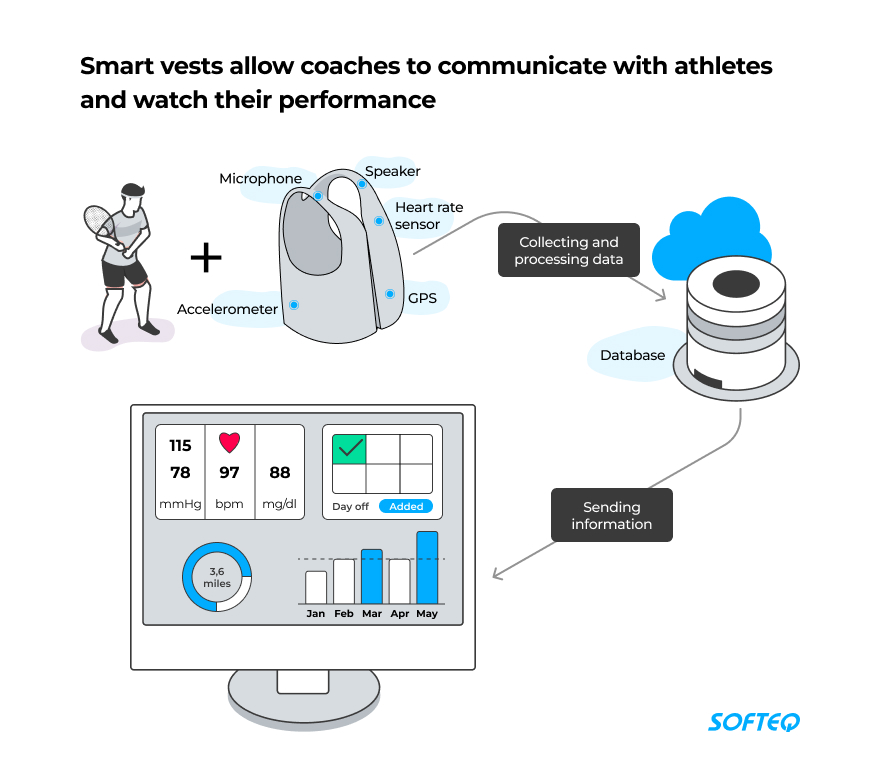
Idea 2. Athlete Health and Recovery
Smart recovery solutions help athletes prevent injuries and heal faster. With the biometric data collected, physicians and teams can adjust training and design recovery plans.
Technically, there’s a variety of solutions to put sensors on, ranging from clip-ons, to wristwear, e-textiles, and smart shoes. Kinisi, a Softeq Venture Studio participant, is working on a sleeve that captures health data from the knees. All these wearables can be synced with fitness apps and SaaS platforms. Adding AI can aid in the development of return-to-play strategies for injured players. Progress is faster and based on reams of data.
In particular, GPS data can be helpful for health and recovery solutions. It enables you to check distance run, intensity of sprints, and athlete workload. This enables coaches to understand the training process and ensure players are healthy.
Real-life example. Alpha Fiber was a US-based startup working on a tool for detecting potential athlete concussions in real time. It uses computer vision and machine learning to watch head impact from camera feeds mounted at the sports facilities. There is no need for sensors or special equipment on the athletes. The solution deals with the growing rate of traumatic brain injuries. For sports clubs, smart predictions like these could help extend their players’ careers.
Idea 3. Sports Fan Engagement
Tech in sports is here to help teams, stadiums, and streaming services engage with fans. The pool of solutions is vast and includes social platforms, contextual marketing, free-to-play games, and AR content.
On the tech side, it’s augmented reality and virtual reality that are making the headlines here. An AR-powered mobile app can bring sports equipment or a favorite football player to life. VR helps organize virtual stadium or locker room tours. Several solutions may need smart glasses, while others work just on mobile.
Real-life example. Orange, a telecom company, and Immersiv, a French startup, created an “augmented race” for Tour de France fans. Users with AR glasses got access to a 3D map and stats on the progress of the racers and their performances. Spectators could watch a key moment of the tour and follow athletes on the map. Such AR experiences help make sports events like the Tour de France even more appealing for fans. They fill the user’s need for being involved in the event.
Idea 4. Interactive At-Home Training
Smart solutions make at-home training interactive and motivating for their users. With tech on board, a treadmill or stationary bicycle can collect metrics and vitals and compare them with historical data or data from other users. AI helps create custom programs based on user goals, practice history, and limits.
There are more digital fitness products customers can bring home. It might be a climbing machine that imitates mountain hiking and tracks a bunch of metrics, for example. Another solution might be an intelligent yoga mat that watches postures. Another digital fitness product example could be an interactive full-height wall for sports like squash.
Training with AR and VR is an up-and-coming trend. In particular, smart indoor bikes can mirror outdoor movements as users can push and pull them. VR glasses let customers ride somewhere in Italy or Paraguay, without stepping foot outside.
Real-life example. Vaha is a Berlin-based company that created a full-length fitness mirror. The solution functions as a classic floor mirror and an interactive 43-inch touchscreen at the same time. It provides live and on-demand fitness courses, including cardio, yoga, and stretching. Users can have personalized workouts and video sessions with trainers, and it pairs with a mobile app. This mirror is an example of how tech advancements can augment non-tech devices. It introduces a brand-new way of attracting sports amateurs.
Idea 5. Sports Venue Management
Smart tech comes in handy for sports venues. Operators can track attendance, check audience preferences, and improve security. It’s technically possible to track assets with RFID tags and analyze user behavior with BLE beacons. Biometrics are handy for controlling access and tracking visitors to sports events.
Facial recognition is a promising trend. It’s an alternative to fingerprints, the most common form of biometrics used at sports venues. With high-resolution cameras, stadiums can gather guest demographic data and improve fan engagement. Some venues now even use this tech to see how spectators react to ads. Other ideas for sports business startups include smart ticketing and indoor navigation.
Real-life example. Alclear is an American technology company which owns the biometric secure identity platform, Clear. Clear is an example of a solution that stores personal information and connects it to biometric data. The platform verifies identity through fingerprints and iris scanning. It allows sports fans to upload selfies to their accounts so that the system can recognize their faces later. Platforms like this help sports venue operators run a smart and fast pass system.
Sports Tech Companies That Have Been Funded and Awarded
According to Crunchbase, investors pumped $1.4B into sports business startups in 2020. More than half of this was invested in the first eight months of 2021. Techstars, 500 Startups, HYPE, and MassChallenge are among the most active investors in this sector.
Here are some funding leaders from 2021–2022:
- Zwift, an indoor cycling and running platform
- Fiture, a wall-mounted AI display screen with workout classes ranging from yoga to strength training
- Tonal, an AI-powered home gym with strength training coaching
- Strava, an online network for runners and cyclists
Sports tech solutions receive both investments and awards. The Consumer Electronics Show (CES), the most influential tech event in the world, honors tech innovators in the category “Fitness & Sports” every year. 2022 honorees include:
1. Libre Sense, a biosensor from Abbott. The device helps to record glucose levels and athletic performance. It tracks molecular glucose data and sends it to the mobile app or wrist reader.
2. SonicFit, a fitness management mat from Lux Lab. The mat uses sound waves that vibrate muscles and detect and analyze postures to manage exercises.
3. Garmin Approach R10, a portable launch monitor from Garmin. The solution tracks over a dozen golf metrics, such as ball speed, spin, and launch angle. It automatically records video.
4. CLMBR Connected, a connected vertical climber from CLMBR. This is a climbing machine that tracks vertical feet climbed among other metrics. The device features a touch display and on-demand classes.
If you're a newbie looking for how to boost your early-stage startup, Softeq Venture Studio could help you. We help with business skills, tech expertise, and even finance. Softeq is often the first investor in a company. Two new players in sports tech were in the first cohort of participants in the Softeq Venture Studio.
One of them is GetScouted. GetScouted aims to become a verifiable source of athletes’ performance and statistics to coaches and scouts using biometric analysis and analytics. Michael Turner, founder and CEO of GetScouted, is making it easy for sports team coaches and scouts to find recruits whose performance data have been fully verified:
The other is FitLift. FitLift helps improve strength training techniques and reduce athlete injuries. Their solution is a mobile app and wearable device that tracks precise motion and gives feedback. Find out how it works, according to their co-founder and COO Eric Atcheson.
Case Closed
These are exciting times in the sports tech industry. The variety of solutions, the amount of pumped investments, and the number of companies adding tech to sport is on the rise. IoT, AI, and XR technologies offer a chance to develop the most promising areas of use. They range from smart biometrics and wrist wearables to video performance analytics and AR games for fans. The main challenge here is how to determine your competitive advantage. But Softeq is here to help you find the right niche and build a solution that will skyrocket!
More articles on the topic

